Twenty-five million Romanians in 2000 - this was the goal of Nicolae Ceauşescu's society. The communist dictator, with his satanic decree, killed over ten thousand women, and condemned two million little ones to a traumatic childhood.
He had eight siblings, an adventurer father and a humble mother working in the field. Yes, he tried to go to school, but his studies did not satisfy his empty stomach for months. Nicolae Ceauşescu was not even 11 years old when he had to leave his family home and the village of Scorniceşti - writes Thomas Kunze in his book Ceauşescu. Hell on earth". Barefoot, poorly dressed, but stubborn as a donkey, he set out in search of food and a better life.
First, he trained as a shoemaker, then he began to distribute propaganda leaflets. And with every step from home, he was getting closer to fulfilling his greatest dream. I will be the Romanian Stalin - one day ten-year-old Nicolae told his older sister . And, unfortunately, when it comes to barbarism, he kept his word.
And it was the worst barbarity possible - against those who had no chance to defend themselves. They couldn't say anything, resist it, run away, or spit in the face. Why? Because Ceauşescu, proudly called the father of the nation, was a barbarian to children . Those born and, with his consent, living in terrible conditions, and those who were yet to be born and exist in an even worse environment.
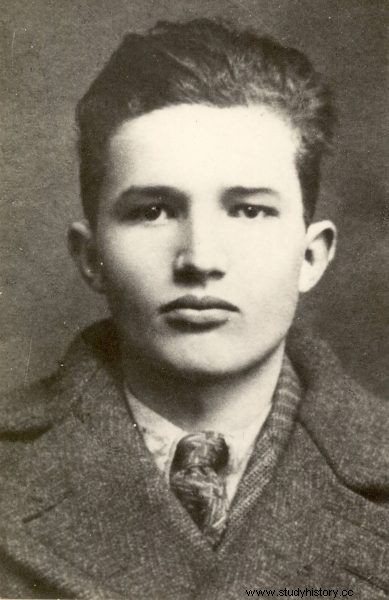
Did Nicolae want to shape his nation in the image of the poor, large family he came from? (Source:Institutul de Investigare a Crimelor Comunismului în România).
Without parents, food and medicine, not to mention toys or clothes suitable for the season. In constant fear, pain and loneliness. Only to increase Romania's birth rate and allow the "genius of the Carpathians" to brag internationally and announce to the public that the state with its capital in Bucharest cares for its citizens in an exemplary manner . After all, worrying about a roof over their heads, a lack of food and the future of their children, mothers wouldn't get pregnant so often ... The truth was quite different.
A woman must be a mother
The sudden increase in the birth rate is explained by Decree No. 770 of October 1, 1966. According to him, only those women who fulfilled their patriotic duty and gave birth to at least four children (in 1984 this number increased to five) had the right to contraception and abortion .
The raped, incest-bearing child, Romki, and those who were over 45 (in 1972 the age was lowered to 40) could also terminate pregnancy, and there was a high probability that their offspring would be born sick. Oh, God forbid, handicapped. There was no place for them in father nation society.
A Romanian TV announcer announces that Nicolae Ceauşescu, party general secretary, is deeply sorry for the Romanians' attitude that they do not want to bear children. To help them change this selfish attitude, Comrade Ceauşescu introduces Decree No. 770, under which abortions will henceforth be punished with imprisonment . - In this way - declares the announcer - we are writing a new page of history in our glorious fight against the decadence of imperialism.
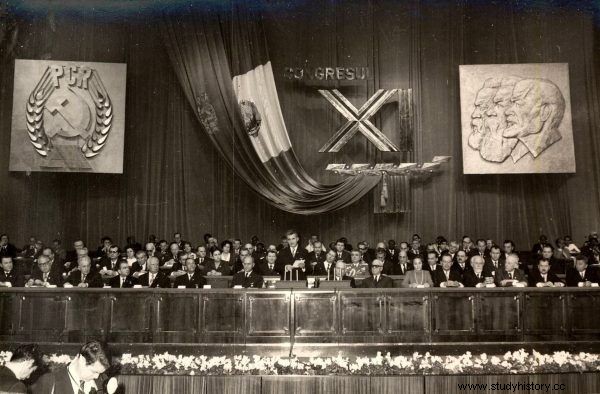
"There is no place in Romania for women who are not mothers!" - thundered from Ceauşescu's rostrum to his party comrades and companions (source:Institutul de Investigare a Crimelor Comunismului în România).
The provisions of the Ceauşescu Decree are announced at the 9th Congress of the Romanian Communist Party. The party comrades burst with pride, applaud and nod their heads expressing admiration and appreciation for the idea of their leader. The companions go silent. Just like ordinary women, whose only function in society henceforth is to produce children. There is no place in Romania for a woman who is not a mother - spoke at the Ceauşescu convention.
Of course, I had an abortion
In his opinion, the assumptions of the party leader were enlightened. Nicolae Ceauşescu, looking at a society licking its wounds after the war, deprived of the strength and spirit to rebuild the country, wanted to create an ideal population. Healthy, intelligent, strong, athletic and, most importantly, fully devoted to him.
What was the Father Nation's experiment like in reality? The numbers say it all - in the twenty-three years of the Decree in force, more than two million unwanted children were born in Romania . Nobody waited for them, nobody even gave them names. Babies were sent to orphanages, and they were assigned numbers there.
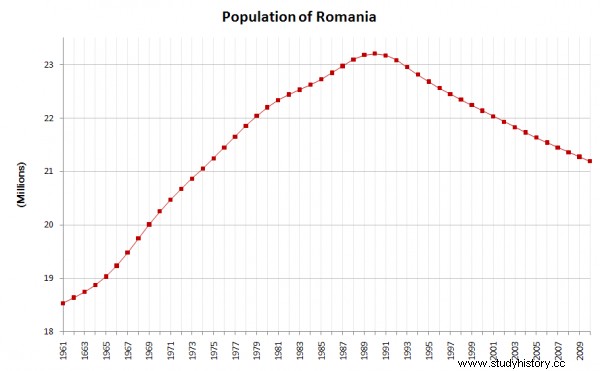
After the introduction of Decree 770, everything looked like a beautiful dream come true in the statistics. The reality was more like a nightmare (source:FAOSTAT, license:CC BY 2.0).
Because they were not the offspring of Romanian mothers - millions of children born after 1966 were Ceauşescu's children. And he needed numbers, indicators, charts, and above-average statistics. The party coined the slogan "Twenty-five million Romanians in 2000!" Six million are still short, so the citizens have to get down to work.
According to this slogan, before the hell of unwanted children began, their mothers were traumatized . There was no question of contraception - condoms were immediately removed from stores, and other methods of contraception were unknown to Romania. Evidence? "Pour boiling mamaliga inside", "Jump on one leg", "Run up the stairs" - such advice was given to women of childbearing age.
Besides, the Ceausescu Decree was clear - Romanians must give birth, not prevent or "get rid" of pregnancy. Because every abortion, the so far allowed method of removing an unplanned child, will be punishable by imprisonment. On the day the Decree was announced, women had to deal differently. Of course, they could not put themselves under the care of specialists in the hospital ( being caught in an abortion could result in imprisonment for both the woman - about a year, and the doctor - about five years ), so they sought help from amateurs.
Of course I had an abortion like any other, says Ms Oana, 63, today. I went through an abortion three times, each time my friends helped me find someone. Everything went through word of mouth:this one or this one does too much and too much. Dentist, mechanic, midwife . It does not matter if after medicine, it is important that it is a trusted person .
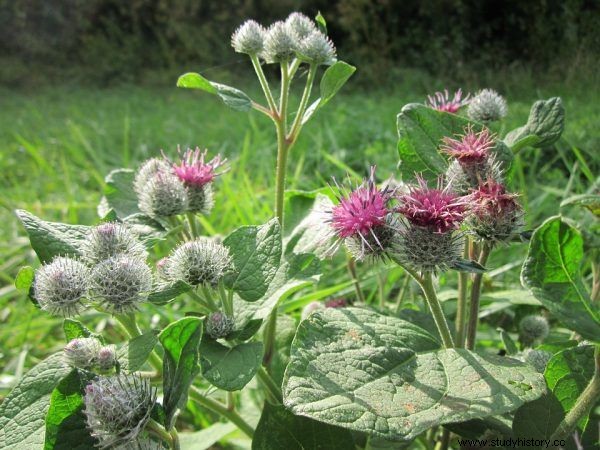
By performing amateur abortions, Romanians used terrifying tools. One of them was a burdock stalk (author:AnRo0002, license:CC0).
Worse, if the woman did not have any connections and was left alone with an unwanted pregnancy. Rumunek's memories of that period are terrifying. Mrs. Oana says:
Women put anything spicy into the womb . You know, they did get wounds, but that was about causing the hemorrhage and for it to finally spill out. In the countryside, they used a spindle, wires, crochet hooks, but also horseradish root, stalks of some plants, St. John's wort, lovage. Burdock was the best because it had a long, hard stem and was used to heal wounds. The burdock was disinfecting and like a knife. Perfect.
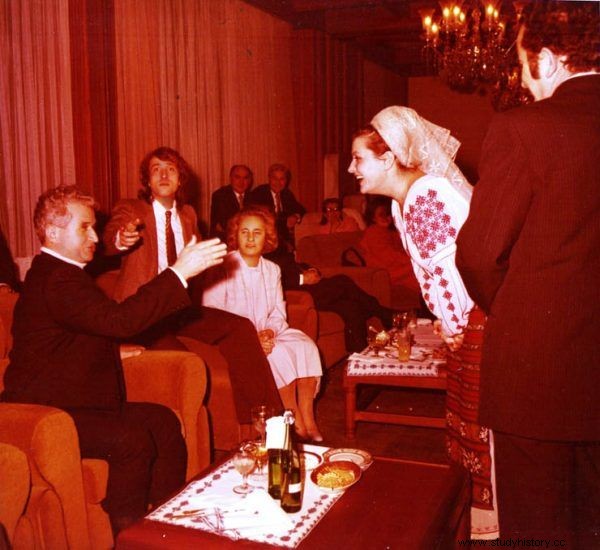
After the birth of ten children, one could count on the grace of an audience and a financial reward (source:Institutul de Investigare a Crimelor Comunismului în România).
I can't calmly watch a woman knit. I associate these wires with one. (...) My husband and I went out of town recently, he is fishing, I sat on a blanket, I look at bushes, at wormwood, nettles, thistles, I think:This would be possible, this would not be.
Over ten thousand Romanian women lost their lives due to illegal abortions and post-abortion complications during the years of Decree No. 770 .
Numbers with no identity
Ladies who dealt with the intensive production of a new generation into the world were given the Mother of the Hero medal, two thousand lei and special privileges from the father of the nation. To obtain this honor, the woman had to give birth to ... ten children . Such a mother was even sometimes invited to Ceauşescu audiences.
But when the chief was bursting with pride seeing one, in his opinion, happy mother (mothers living in extreme conditions came to the chief only for money), hell of thousands of women and newborn children in hospitals.
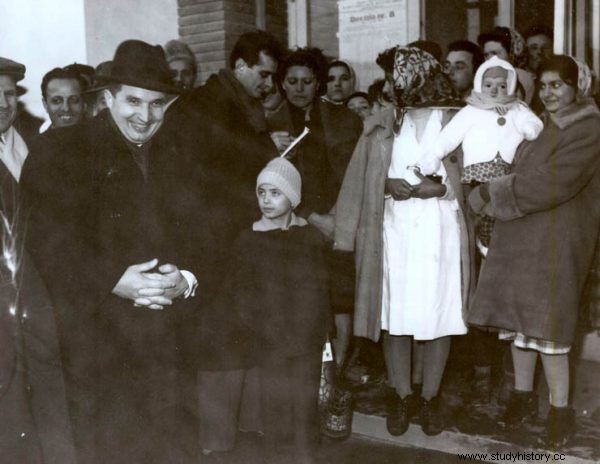
Ceauşescu, like almost every dictator, liked to surround himself with children. And, like every dictator, he preferred a beautiful illusion to the cruel truth (Source:Institutul de Investigare a Crimelor Comunismului în România).
Up to 1000 of them could be born in one day. Hospitals were overcrowded, mothers had no beds, and staff were still scarce. Women gave birth wherever they fell, as long as the decree . And then they abandoned their children because they had no chance of providing decent living conditions for them - recalls one of the Romanian doctors of the time.
Unwanted babies ended up in orphanages.
When a child was born with any disability, mothers were advised to give them to an orphanage immediately. There was also a second possibility - the doctors persuaded the father to inform his wife about the child's death during the delivery, and to give it to the institution himself
- says Dr. Sanda Gancevici, pediatrician from Bucharest. Ceauşescu's new society was to be healthy and strong. Handicaps and disabilities would distort the ideal population from the father nation's vision.
Nicolae Ceauşescu did not predict one thing in his experiment - even children who were born healthy did not have loving parents, a real home and basic living conditions. They lived in the streets or in orphanages as "numbers" with no identity.
The stay at the center was a hard time for me. There was always someone bigger and stronger to beat you. The guardians themselves sometimes used strange methods of upbringing - chose the strongest child among us and ordered him to beat us, the weaker . To this day, I do not understand why - recalls Doru Mircea, one of Ceauşescu's sons.
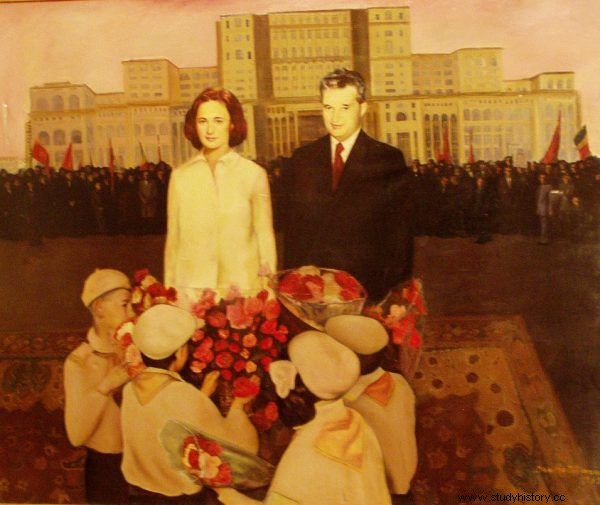
Pathological "mother and father of the nation". The real "Ceausescu children" would rather not bring them a basket of flowers ... (photo's author:RaLaura, source:Flickr).
Children like Doru Mircea, let us recall, were born between 1966 and 1989 over two million. They grew up like animals in a shelter, crammed into small spaces, looking at the guardians with sad and frightened eyes. They didn't know what normal life was like. Swarms of flies were walking on the weakest who did not even have the strength to move.
The healthy ones only hurt their soul, while the sick additionally suffered from a lack of drugs or lack of hygiene (syringes without sterilization were used several times). The world learned about this barbarism only thanks to the Canadian expedition, which was the first to visit the hell that Ceauşescu prepared for the youngest Romanians with a camera.
